How East Gippsland fires compare to Black Saturday in 2009
The bushfire crisis spanning the state’s northeast and East Gippsland is said to be the worst since the Black Saturday fires. So what does that mean in terms of land burned, lives lost and homes destroyed?
VIC News
Don't miss out on the headlines from VIC News. Followed categories will be added to My News.
The bushfires sweeping through East Gippsland and northeastern Victoria have tragically claimed the lives of three people and countless animals, destroyed homes, properties and businesses and thrown communities into chaos.
The 2019/2020 Victorian bushfires are said to be the worst since the Black Saturday fires on February 7, 2009, when 173 people were killed in one of our worst natural disasters.
While the current bushfire emergency is far from over, here’s how the two events compare so far.
FIRE IMPACTED TOWNS
Black Saturday
• Delburn
• Mirboo North
• Boolara
• Yinnar
• Churchill
• Labertouche
• Jindivick
• Jindivick West
• Jindivick North
• Drouin West.
• Longwarry North.
• Robin Hood
• Bunyip
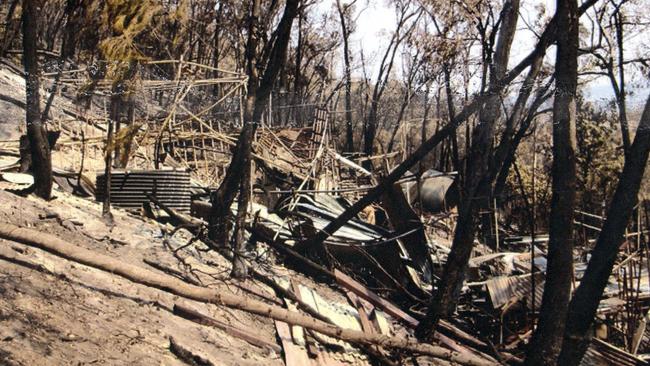
• Kilmore East
• Wandong
• Wallaby Creek
• Humevale
• Strathewen
• St Andrews
• Steels Creek
• Dixons Creek
• Yarra Glen.
• Healesville.
• Kinglake
• Kinglake West
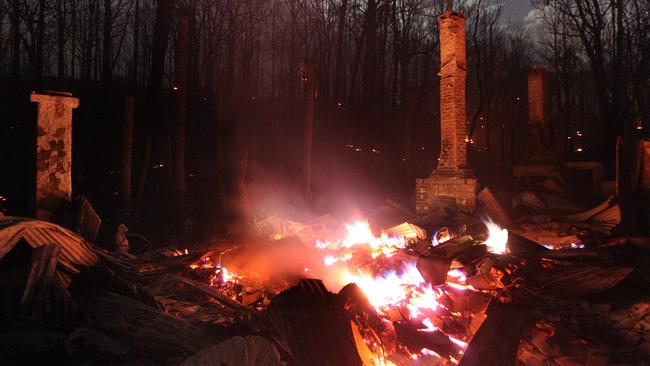
• Clonbinane
• Chum Creek
• Flowerdale
• Hazeldene
• Castella
• Glenburn.
• Horsham (Vectis and Haven)
• Coleraine
• Pomborneit – Weerite
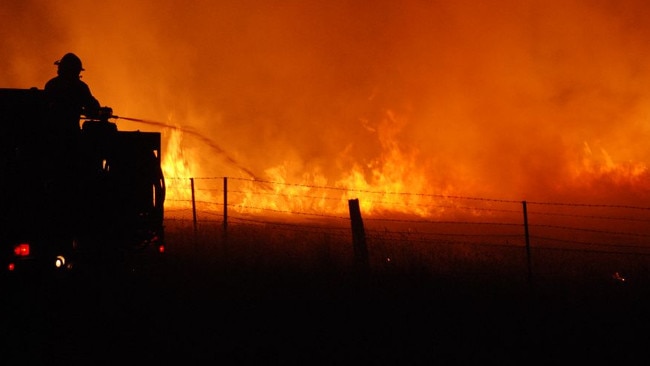
• Jeeralang North
• Balook
• Le Roy
• Koornalla
• Callignee
• Callignee North.
• Callignee South.
• Hazelwood South
• Hazelwood North
• Traralgon South
• Devon
• Yarram
• Carrajung South
• Murrindindi
• Narbethong
• Marysville
• Buxton
• Taggerty
• Greater Bendigo.
• Mount Alexander
• Macedon Ranges.
• Mitchell
• Redesdale
• Narre Warren (Harkaway, Lynbrook — Coral Drive and Golf Club Road)
• Upper Ferntree Gully
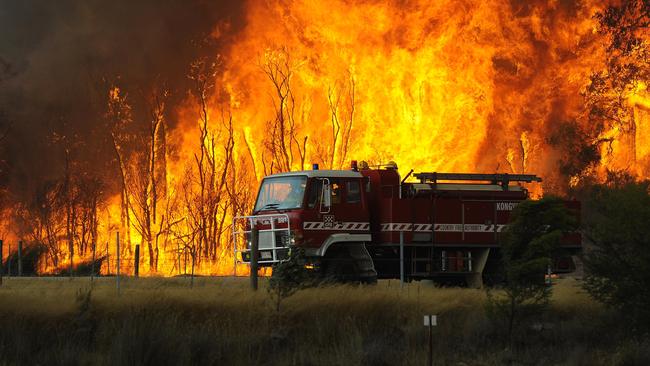
• Bendigo (Maiden Gully)
• Beechworth – Mudgegonga.
• Baarmutha
• Bruarong
• Rosewhite
• Kancoona South
• Kancoona
TOTAL: 67

East Gippsland + northeast
• Sarsfield
• Buchan
• Mallacoota
• Orbost
• Nowa Nowa
• Cudgewa
• Wairewa
• Goongerah
• Marlo
• Cabbage Treek Creek
• Bindi
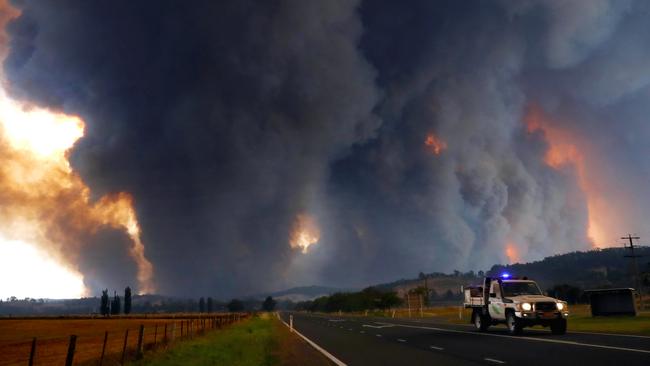
• South Bentley Plains
• Brookville
• Anglers Rest
• Dinner Plain
• Omeo
• Falls Creek
• Bluff Creek
• Gelantipy
• Cann Valley
• Bemm River and Cann River
• Swifts Creek
• Tambi Crossing
TOTAL SO FAR: 24
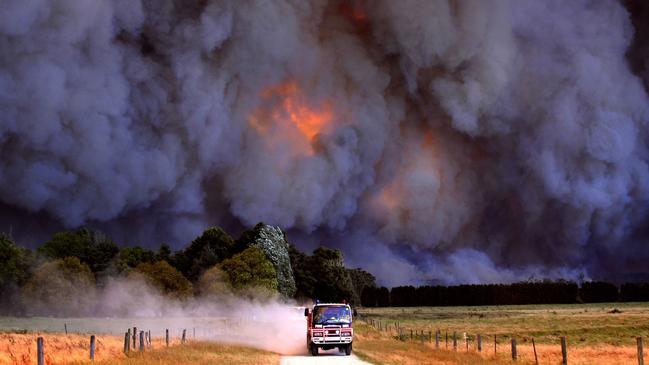
LOSS OF LIFE
Black Saturday
— 173 people, with five fires responsible for the deaths: Kilmore East (119), Murrindindi (40), Churchill (11), Beechworth-Mudgegonga (2), Bendigo (2).
East Gippsland
— Three people confirmed dead.
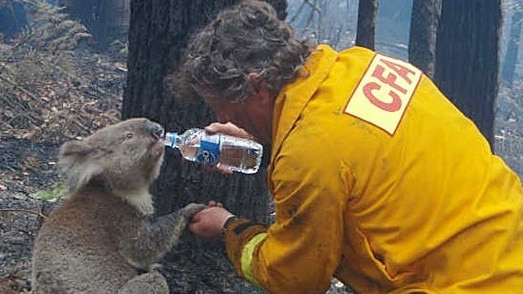
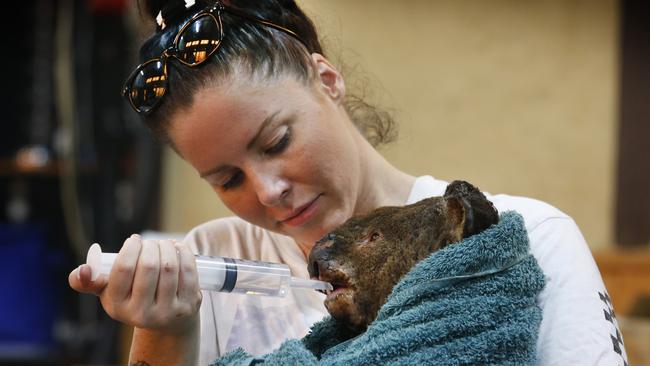
ANIMAL, WILDLIFE DEATHS
Black Saturday
— More than one million wild and domesticated animals were lost in the Black Saturday fires.
East Gippsland
— Close to half a billion animals have been killed in the NSW fires and a similar toll is expected in Victoria.
—Tens of thousands of animals have been injured or displaced.
FIRES ATTENDED
Black Saturday
— Royal Commission found 15 fires had the potential to cause the greatest damage, with nine caused by direct or indirect human activity, five associated with failure of electrical assets and four thought to be suspicious.
East Gippsland
— Total number of fires attended yet to be confirmed, but 23 fires remained active as of Thursday 9 January.

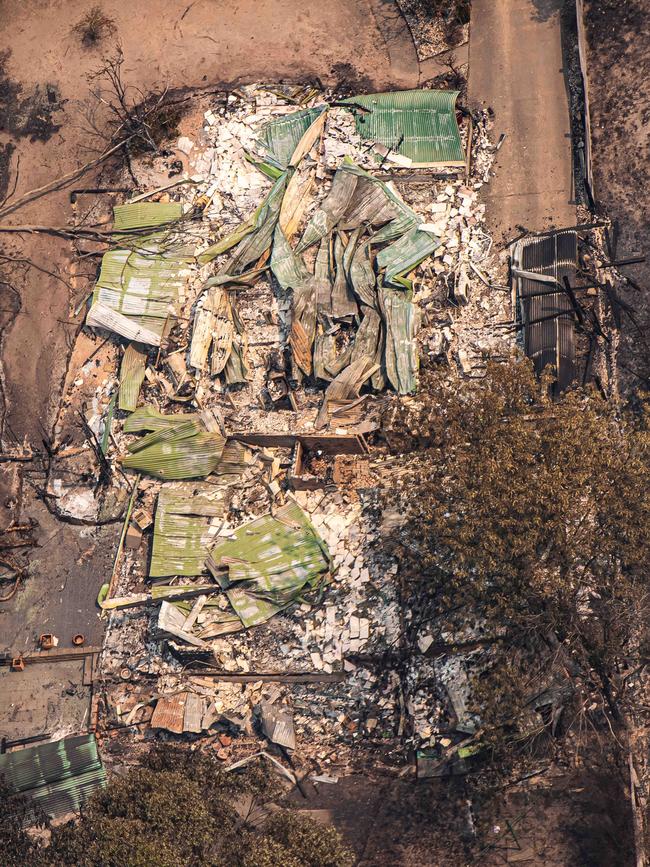
HOMES DESTROYED
Black Saturday
— 2133 homes destroyed as a result of the January-February 2009 bushfires in Victoria.
— 61 businesses destroyed.
East Gippsland
— 450 buildings, 250 residential properties and 243 outbuildings razed. The number is likely to rise when the extent of damage at currently isolated fire areas is known.
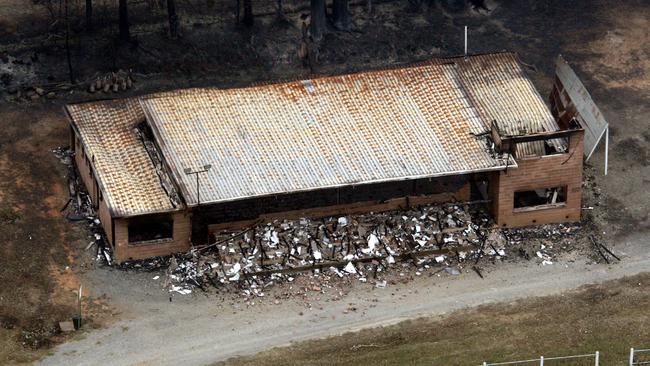
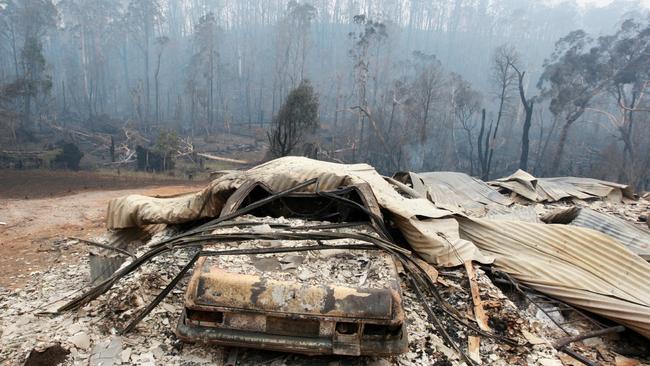
COST OF FIRES ON COMMUNITY
Black Saturday
— Royal Commission into the Black Saturday Fires estimates $4 billion, but said it was hard to determine an exact figure.
East Gippsland
— Unknown figure on the cost on the community.
LAND BURNED
Black Saturday
430,000 hectares of land were directly affected by fire.
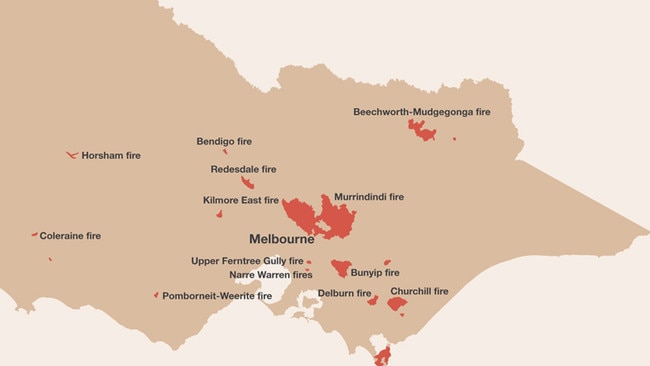
East Gippsland
More than 1.2M hectares of land burned to date.
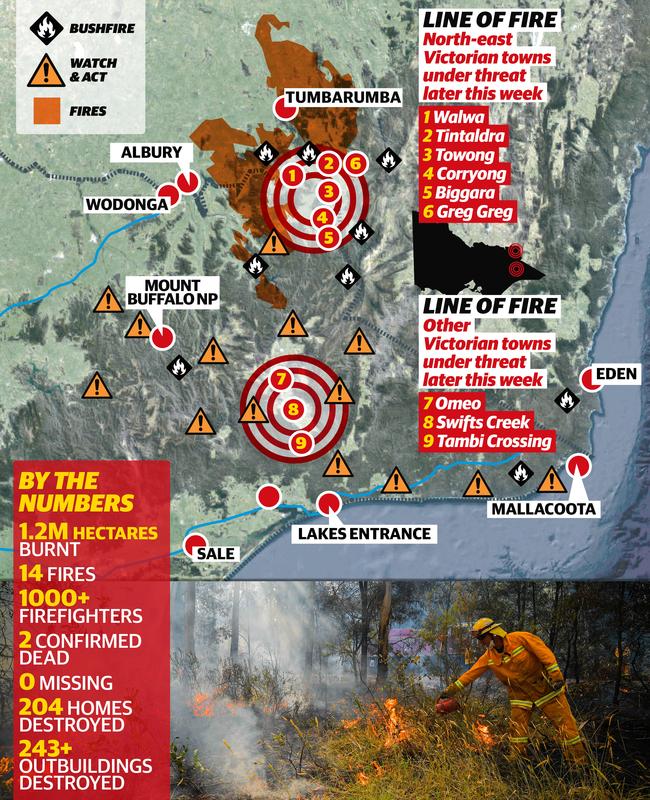
RESPONSE
Black Saturday
— CFA volunteers and their families were a large part of the Black Saturday fire response efforts, with many crews on standby. This was recognised in the Royal Commission.
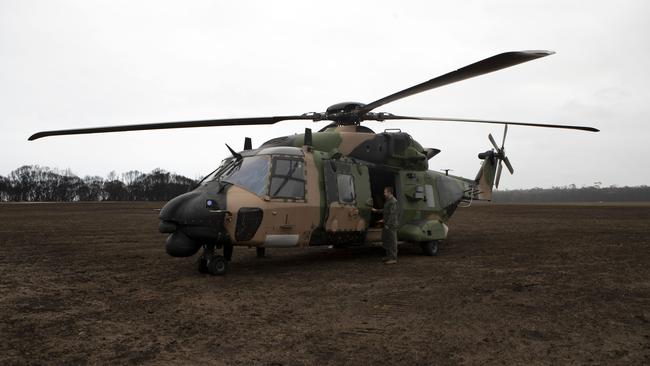
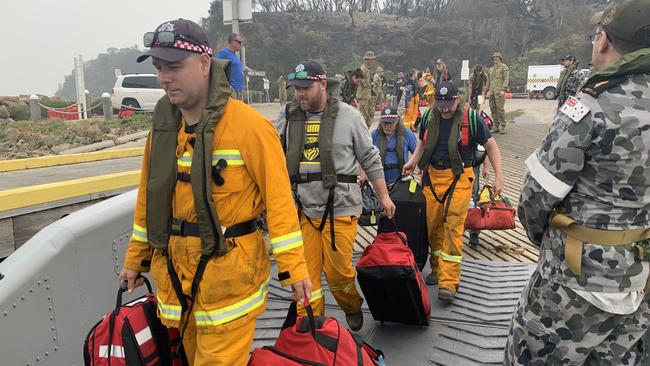
East Gippsland
— The Australian Defence Force formed part of the rescue efforts and removed trapped East Gippsland residents from Mallacoota via navy ship and helicopter.
— 1000 people taken by navy ship and 400 were rescued by military helicopter.
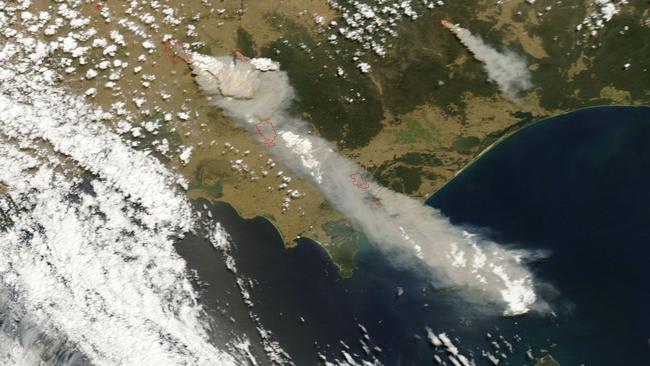
WEATHER CONDITIONS
Black Saturday
— Prior to Black Saturday, Melbourne’s forecast temperature exceeded 43C degrees for three consecutive days for the first time since records were kept.
— Bushfire agencies, the CFA and Department of Sustainability and Environment had said the forests and grasslands were the driest they had been since the Ash Wednesday Fires in 1983.
— Melbourne reached a maximum of 46.4C on February 7, 2009.
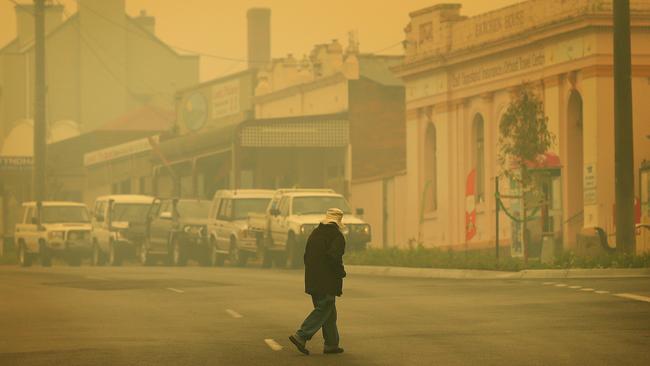
MORE NEWS:
AFL STARS BACK BUSHFIRE ORIGIN GAME
East Gippsland
— Extreme weather was recorded on November 21, 2019, with Lakes Entrance recorded 41.6C. On this day the initial East Gippsland fire began.
— The maximum temperature recorded on Monday 30 December, 2019, in Lakes Entrance was 42.4C and Orbost 43.1C, with Melbourne reaching 40.8C.
— Smoke from bushfires in East Gippsland and the northeast of the state caused air pollution in Melbourne on Monday January 6, 2020.
Read more about the impact of the Black Saturday bushfires here.
Sources: BoM, 2009 Victorian Bushfires Royal Commission Final Report Summary, Forest Fire Management Victoria.
